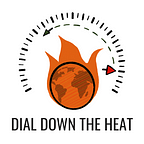Climate Change 101
What is climate? How is it different from the weather?
“Climate is what you expect, weather is what you get.”
Weather: Short-term changes in the atmosphere that you can track every day.
It’s 72 degrees outside, today!
Climate: Long-term changes in weather conditions over a period of time in a specific location.
It generally begins to snow in Wisconsin around the end of October and at the start of November.
If you are trying to teach kids the difference, here are some exciting tools you can use:
ClimateKids, NASA, Crash Course Kids
Is the climate really changing? Who do I trust ?
The global climate is really changing. The degree of change varies from place to place and the consequences of this change affect both humans and biodiversity.
Controversy does loom over this topic and it may seem as though the change is not real or abnormal, but it is. In fact, a majorty of adults in the United States believe that climate change is affecting their communities. Research and surveys show that people worldwide view climate change as a major threat. Visit the resources section to view maps that show the extent of climate change impacts across the globe.
The best people to trust are climate scientists, researchers, and professionals who work with atmospheric systems. They have worked hard to provide us with data that show how the climate has changed and models that show how it might continue to change. Healthcare professionals, farming, and fishing communities as well as people living in coastal regions in various parts of the world are also reporting on climate change as they face the impacts first-hand.
The impacts of climate change are being faced by large populations across the globe and they can be in the form of drastic weather conditions, shortage of resources, natural disasters, and more. You can trust these global stories and tie that with the data available in order to believe that this global climate change is happening!
Here is a cool activity for middle school kids to teach them about the relationship between climate change and natural disasters.
Warming? But it’s snowing out here.
Since seasonal changes are still regularly occurring, it can be hard to look around and tell yourself that the planet is getting hotter. While seasonal variations may seem normal, they are not. Year by year, climate data and predictive models have shown that temperatures during the respective seasons are warmer. This means that while it may still be snowing in your locality, it may last for a few days less than the previous year, while hot days during summer may last for a few days more. This goes to show that climate change is a cumulative phenomenon that grows increasingly severe over time.
The heating effect as we know, is caused by atmospheric greenhouse gas accumulation, most prominently carbon dioxide. The most prominent record of carbon dioxide atmosphere levels is kept by NOAA’s Mauna Loa Observatory in Hawaii, which has been monitoring CO2 and other greenhouse gas levels since the mid-1900s. This record, known as the Keeling Curve along with that kept by the Scripps Institution of Oceanography in UC San Diego are the clearest indicators that snow as we know it may not be so abundant in the decades to come.
Can Climate Change affect me?
Simply put, climate change can and will affect every individual in the coming years. The changing climate will cause an increment in 2 things — sea levels and natural disasters. The atmosphere isn’t the only factor that will contribute to warming. Global oceans are the largest heat reservoirs on the planet and store more heat than the atmosphere. Rising sea levels is a major threat to coastal cities and nations. In these areas, the people with poor living conditions, infrastructure and absence of climate resilience measures will suffer the most. Billions of dollars’ worth of property will be destroyed and people will be displaced and left homeless. Climate refugees will increase in shocking numbers. A study in 2011 found that since 1970, the heat trapped by the earth has risen to the equivalent of the energy output of a 190,000 nuclear power plants. Since oceanic heat constitutes most of this, weather phenomena like El Nino or La Nina can capitulate into superstorms and pressure systems of unprecedented scale and power with the potential to wreak wanton destruction.
